2023 Toyota Highlander Review: Definitely go for the hybrid

The 2023 Toyota Highlander remains a strong three-row SUV choice, if you choose the hybrid. It's amazingly efficient, delivering 35 mpg combined with all-wheel drive. Not only is it a huge advantage over the conventional gas-powered Highlander, it represents a huge advantage over virtually every other SUV in its class.
On the flip side, there's the conventional Highlander. And now, it's a worse SUV to drive. Toyota dropped the silky V6 in favor of a turbocharged 2.4-liter four-cylinder. It apparently has fewer emissions than the V6, but with a single mile-per-gallon improvement and a much noisier, more unpleasant driving experience, it's a downgrade in our book.
Regardless of engine, you still get solid handling, an attractive and usable interior, and Toyota's reputation and subsequent resale value. A smaller third-row seat and cargo area are definite demerits, especially in a class where space is a prime factor in the purchase, and because of that, options such as the Kia Telluride, Hyundai Palisade, Subaru Ascent and Nissan Pathfinder could be better for you.
If you don’t need that much room, however, the Highlander Hybrid is an unmatched option for its efficiency, and is definitely worth a look. The non-hybrid Highlander? Not so much.
Interior & Technology | Passenger & Cargo Space | Performance & Fuel Economy
What it's like to drive | Pricing & Features | Crash Ratings & Safety Features
What's new for 2023?
The Highlander has dropped its V6 engine option in favor of a turbocharged 2.4-liter four-cylinder. It delivers less power, but much more torque. It's also very slightly more efficient. The infotainment system has been updated to run on the system featured on other new Lexus and Toyota models. The standard touchscreen measures 8 inches, and the upgraded one is 12.3 inches. It also features wireless Apple CarPlay and Android Auto compatibility. Some minor feature changes for some trims have also been implemented.
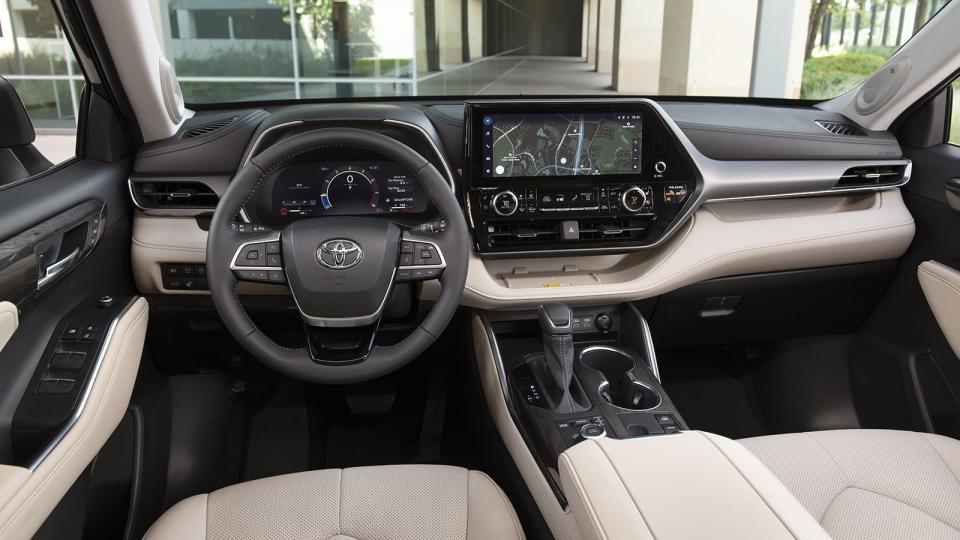
What are the Highlander interior and in-car technology like?
Admittedly, the picture above is indicative of the higher XLE, Limited and Platinum trims – the lower L and LE are rather dour and monochromatic affairs. Yet, even those have above-average interior quality, and since those pricey trims tend to be popular, it's worth extolling their virtues a bit. The earthy two-tone color schemes are distinctive, warm and generally inviting. The silver trim that wraps around the control binnacle like a fork is textured to make it look richer and more like actual metal. The wood trim on the dash and center console, be it real or not, is subtle and tasteful. The padded SofTex vinyl that covers much of the dash, doors and center console is pleasant to touch, while the real leather on the seats is buttery soft. All the switchgear is pleasant to touch and operate.
Standard on most trim levels is an 8-inch touchscreen interface, which is mounted high within easy reach and sight. The available 12.3-inch unit is largely similar in terms of its basic and operation, but gains functionality by adopting a widescreen orientation. The operating system is the newest that Toyota has to offer, featuring bright, minimalist graphics and natural speech recognition. It's responsive and runs quickly. The shortcut icons on the side closest to the driver are easy to reach, but they unfortunately disappear when you use Apple CarPlay or Android Auto, meaning you have to click-click-click to escape the Apple/Android interfaces rather than using a simple Home button like Toyota used to feature. There are other annoyances we discovered, particularly with the radio operation, that can make the new system less user-friendly than Toyota’s previous ones.
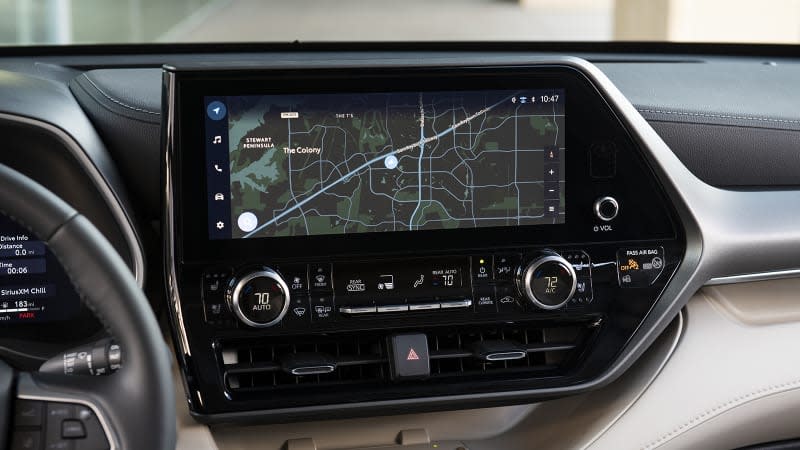
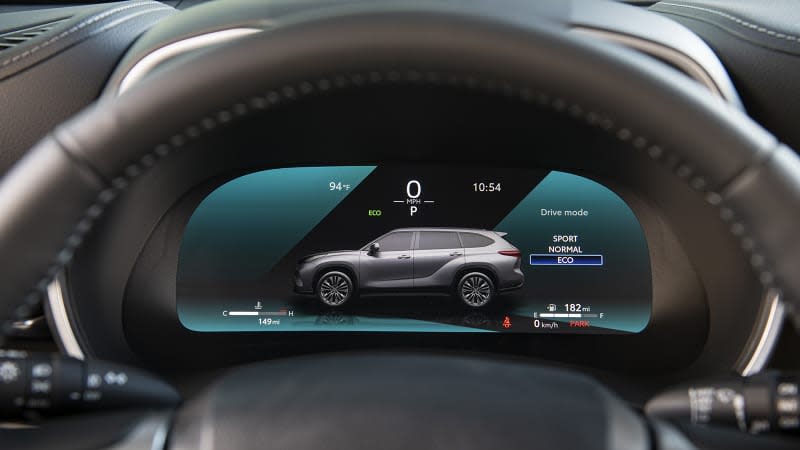
How big is the Highlander?
The Highlander is smaller than most of its competitors on the outside, which makes it slightly more manageable to maneuver and park. Perhaps there's a greater chance of it fitting inside your garage. We're only talking a few inches, though, as the Highlander is still an awfully big vehicle.
Not surprisingly, though, it also has one of the segment's smallest interiors. It's more akin to Kia's Sorento than the bigger Telluride, for instance. There's just a bit less headroom everywhere, but it's the third row that's noticeably much smaller than those of competitors. Even the Subaru Ascent, which has comparable exterior dimensions, can fit average-sized adults in its third row. So too can the larger Kia Telluride and Hyundai Palisade among others. Even if kids are the ones who frequently use third-row seats, they will be less comfortable in the Highlander’s.
At least the second row offers plenty of space (a bench is standard but you can opt for captain's chairs), and the sliding seats are mounted at a height that allows adults and teens to be comfortable for hours on end. Comfort is excellent up front, too, as the driver seat offers abundant adjustability and easy reaches to the steering wheel and infotainment controls.
Cargo space comes in at 16 cubic feet behind the third row of seats, 48.4 cubic feet behind the second row, and 84.3 with all the rear seats folded. Despite the solid numbers, the Toyota still offers less space when all the seats are raised based on our luggage test of the Highlander as well as those of its competitors. There's less when they're lowered too, but that isn't as much of an issue since you're basically dealing with varying degrees of enormous.
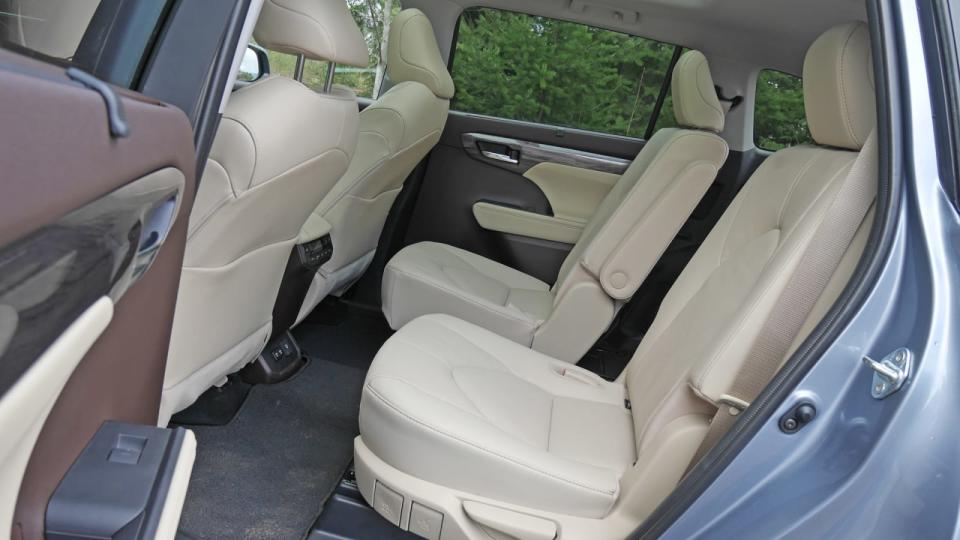
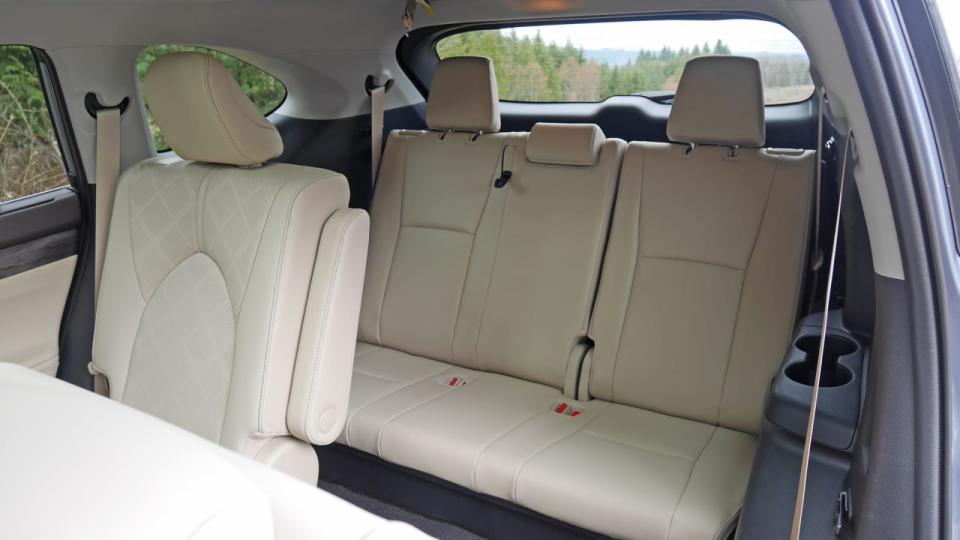

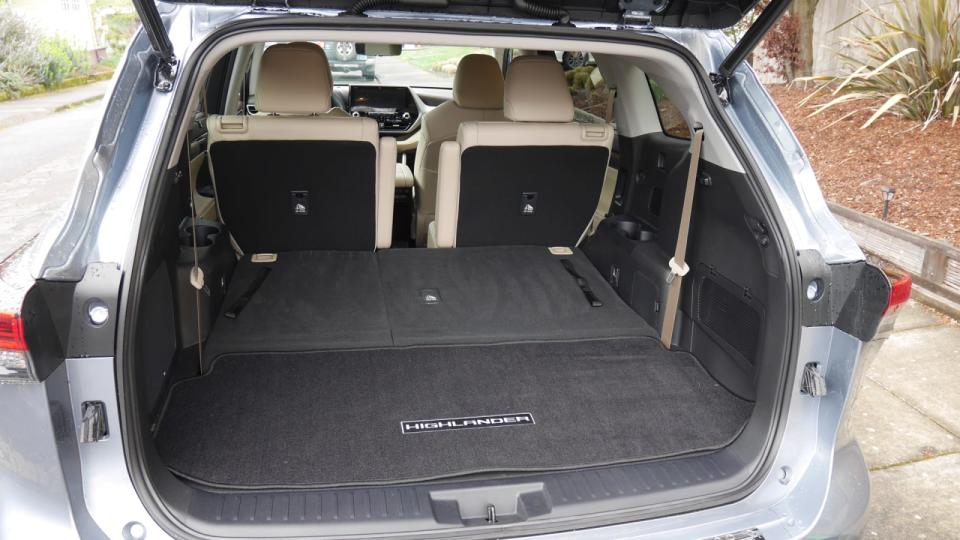
What are the Highlander fuel economy and performance specs?
Here's where the Highlander is a big winner, at least in regards to the hybrid. The electrified Highlander uses a 2.5-liter four-cylinder paired with electric motors that produce a net output of 243 horsepower. That isn't much for the segment, but then no large three-row crossover comes close to its fuel economy. EPA estimates weren’t available for 2023 at the time of this writing, but we anticipate them to be virtually the same: 36 mpg combined with front-wheel drive or 35 mpg with optional all-wheel drive (it uses a second electric motor at the rear axle).
The turbocharged four-cylinder on the other hand should be skipped if possible. Unlike the silky outgoing V6 with impressive horsepower for its class, the turbo engine is loud, clattery and has less horsepower than most competitors. It does feature much more torque than most at 310 pound-feet (an increase of 47 versus the outgoing V6), but the rough-sounding engine makes it sound like it's laboring harder. And while Toyota claims reduced emissions, the owner doesn't reap much of an efficiency benefit from the turbo engine. Full numbers haven't been announced, but it apparently delivers 25 mpg in combined driving, a 1-mpg improvement over the V6. Presumably, these numbers are for the front-wheel-drive models.

 Yahoo Autos
Yahoo Autos 
